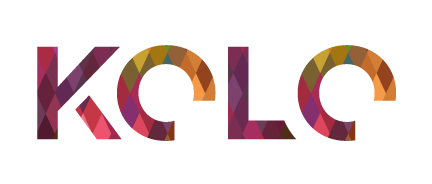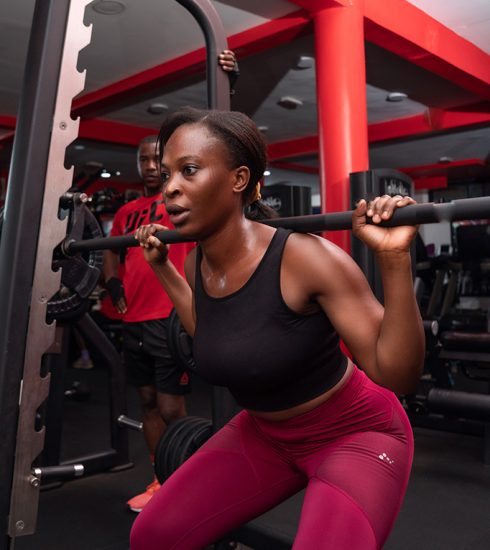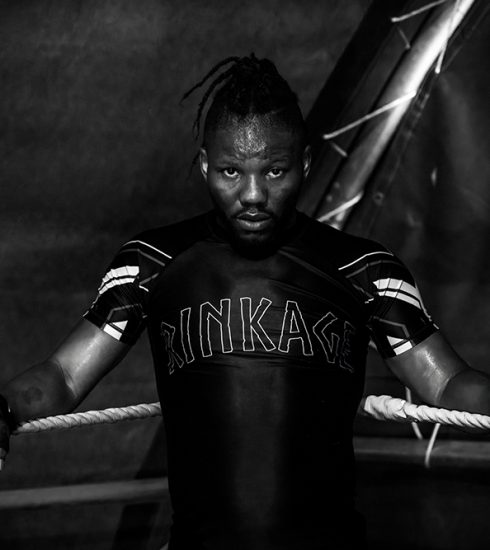Joe Oyebog (JO)
A Tennis Monument with a Big Heart

The Oyebog Tennis Academy (OTA) is doing amazing things. It has 16 tennis courts, a boys and girls dormitory, and multiple sports sections. The program is the biggest in Central Africa and one of the biggest in the continent. The program has been home to over 20,000 kids since its inception. It has assisted over 25 kids from homes with less than 3000 dollars annual income to obtain scholarships into universities with tuitions over 100,000 dollars. Other kids have obtained tennis scholarships to go further their education. OTA is not just about playing tennis, it is about enriching lives and making dreams a reality.
KM: What plans do you have in place for the sustainability of OTA?
JO: We need considerable resources to sustain the academy. We need 20 million dollars to get the academy completed. Our board of directors in the USA is working hard to solicit funding through programs that support causes like the academy. Yannick Noah has brought in Le Coq Sportif, which is now drafting a professional contract with OTA with the vision of helping the children become part of a professional structure. We are open to assistance from state and local partnerships. We hope to someday benefit from government funding to continue supporting these kids to achieve their dreams.
KM: How has hosting international tournaments been beneficial in branding OTA?
JO: It has been amazing. CNN covered a story on OTA and our event. We had players from over 100 countries register, and 17 countries participated. The coverage gave the program great international exposure. We are upgrading our facility, so the next tournament will be more hospitable and comfortable. We are also building courts that can host tournaments on the ATP and WTA levels.


KM: How can the kids in OTA with world rankings succeed at the senior level?
JO: There are many kids but let’s talk about Atang Stadfany and Nkwain Clifford. Clifford had his first ATP points in November of 2019. He trained hard, and we sent him to a tournament in Tunisia. Unfortunately, he lost both of his matches. However, it takes 20 to 30 more opportunities to prepare him to compete at such high levels. Unfortunately, as a program, we do not have the resources to invest at such a risk level.
JO: Stadfany went as high as 300th in the world junior rankings. She has gained the interest of schools in the USA. Her route will be to go through college. She can integrate through college tennis, earn a degree, and pursue a professional career after graduation. She has a complete game and can achieve great things in the right environment. Cameroon has over 20 kids with a world ranking in the juniors. We are investing in having a few of them achieve senior world ranking in a few years.
KM: In your opinion, which obstacles prevent local tennis players from excelling?
JO: Vision, parental involvement, and financial resources. Most African parents do not have the vision to get a player ready to compete at the international level. In the West, kids start as early as one year old, while back home, we start by age 10. When the average African kid is exposed to tennis, kids their same age in the West have over 10,000 hours of playing time. We did campaigns to recruit children ages 2 to 5 into our program. Some parents were superstitious and skeptical, asking, “is this about tennis or something else?” Parental awareness is needed to expose kids to tennis early.
Secondly, tennis is a sport that needs parental involvement. Most kids from Africa come from large families, and both parents must work to make ends meet. Although most kids abroad come from a family of one or two kids, their parents can be more involved with their activities.
Finally, money and resources. If we had more ITF events, better infrastructure, and more resources, some of our better athletes would excel, and we could take better care of them.

KM: How can the Cameroon Tennis Federation be more efficient to benefit players?
JO: The tennis federation has always had excellent leaders. However, we need proper management with the orientation to lead the federation to professionalism. I had this discussion with Yannick Noah, who thinks having a professional structure in Cameroon is difficult, but I believe the opposite. When he visited Souza and saw the system in our program, he became convinced and took me more seriously. I hope he can orientate his success to get younger children to believe.
There is a specific route that is the universal standard to achieve efficiency. First, kids must compete in tournaments six and under, eight and under, ten and under, and 12 and under, then graduate into ITF juniors. Next is the low-grade ATP and WTA tournaments with15 thousand dollars of prize money. This gives our players a chance of graduating into the ATP and WTA with a few points.
“Tennis in Cameroon is gradually transitioning from an amateur structure into an orientation of a professional structure with the nature of ITF events we are hosting. This makes it hopeful for the future of tennis”.
KM: How can tennis become a viable financial source for the top-tier players?
JO: If the right kind of tournaments come to the country with the right prize money, it can change the lives of players. Unfortunately, we have had excellent players like Nkwenti Blaise and Teboh Etienne stuck in an amateur system that does not compensate. These players could quickly make up to 100 thousand dollars yearly just sparring. Top-tier players must be open to orientating their talents abroad and hopefully reinvesting back home.
KM: Did you push your kids to pick up tennis, or did they naturally fall in love with the sport?
JO: Push them, I am not sure, but I don’t think they had a choice. When we opened the Bonaberi Tennis Wall, it was next to my home. When my kids were born, the first sounds they heard were that of tennis balls hitting the wall, and when they could see, the first things they saw were tennis balls going left and right. So they were naturally induced into the OTA program. As any parent would, I designed it such that tennis would be part of their lives at the early stages so we could share something in common. This was my wish. However, as they grow older, they can choose their own path. But for now, I thank God for the blessing my children and I have in tennis to share.


“Pete Sampras was my idol growing up. We are the same age and share the same birthday. You also had John McEnroe, Ivan Lendl and of course Yannick Noah”.
KM: Have you thought of expanding OTA to other African countries?
JO: Absolutely. We have had interest from Zaire, Equatorial Guinea, and Nigeria. We are building a blueprint of our successes to be replicated in other third-world countries to help get kids out of poverty.
KM: What message would you like to pass on to the younger generation of players?
JO: To believe in their dreams. Work hard, and someone in the system will notice their hard work and give them a chance. If the opportunity is abroad, fair enough, go and get it if the chance presents itself. However, trust your country and look for opportunities around you. Do not let anyone change your orientation of thinking by telling you it is impossible to succeed at home.

 Download
Download 














